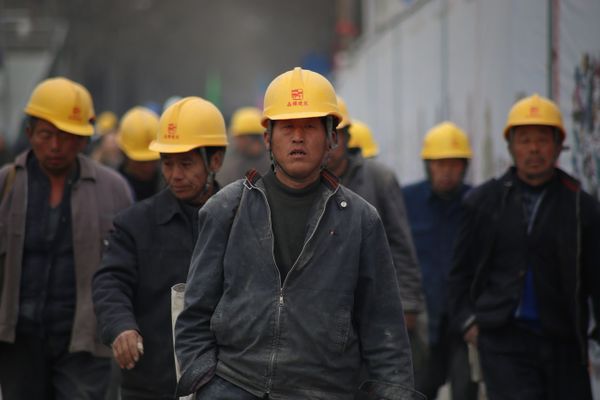6.1.1
Types of Poverty
Absolute Poverty
Absolute Poverty
Poverty can mean slightly different things based on individual circumstances and comparisons within the same society. These differences are referred to as absolute and relative poverty.


Absolute poverty
Absolute poverty
- Absolute, or subsistence, poverty refers to a lack of minimum requirements necessary to subsist and to maintain life, health and physical efficiency.
- These requirements would include, adequate food, water, clothing and shelter.
- People in absolute poverty would be poor anywhere in the world and at any time, so the standard doesn't really vary much over time.


Limitations
Limitations
- There are difficulties in objectively identifying what basic subsistence needs are.
- It tends to ignore the realities of living in poverty.
- For example, those who live in poverty may be unable to buy at the cheapest price because they lack the money to buy in bulk, so they end up paying more for everyday products.


Limitations cont.
Limitations cont.
- There is no clear subsistence minimum because it varies between societies and between groups in the same society.
- For example, manual labourers doing heavy physical work require more calories than an office worker.
- It ignores social needs, cultural expectations and value judgements, that is, it treats people like mere biological machines.
Relative Poverty
Relative Poverty
Poverty can mean slightly different things based on individual circumstanced and comparisons within the same society. These differences are referred to as absolute and relative poverty.


Relative poverty
Relative poverty
- Relative poverty defines poverty in terms of social inequality, taking into account social and cultural needs.
- According to Townsend, people are in relative poverty when they lack the resources to obtain the diets, participate in activities and have the living conditions and amenities that are seen as customary in the society in which they belong to such a degree that they are excluded from ordinary living patterns, customs or activities.


Definition
Definition
- Relative poverty sees poverty as a social construction, dependent upon the perceptions of others about what constitutes a reasonable standard of living in any society.


Measuring relative poverty
Measuring relative poverty
- One way relative poverty is measured is by saying that 60 percent of median income or below is the official poverty line (this measure is used in Britain and the EU).
- The Minimum Income Standard is an unofficial, yet popular, measure of income the public think needs to be spent on household items and services for a minimum acceptable standard of living.


Strengths of relative poverty
Strengths of relative poverty
- It recognises poverty as a social construction.
- It recognises that what constitutes poverty can change between societies and over time within the same society.
- It links poverty to wider issues of social exclusion and recognises the social, cultural and environmental dimensions of poverty.


Limitations of relative poverty
Limitations of relative poverty
- It is a measure of social inequality, rather than an indicator of poverty.
- It includes value judgments as to what constitutes a reasonable standard of living.
- It is difficult to establish what counts as an acceptable standard of living and the cultural need that should be included.
1Theory & Methods
1.1Sociological Theories
1.2Sociological Methods
2Education with Methods in Context
2.1Role & Function of the Education System
2.2Educational Achievement
2.3Relationships & Processes Within Schools
3Option 1: Culture & Identity
3.1Conceptions of Culture
3.2Identity & Socialisation
3.3Social Identity
3.4Production, Consumption & Globalisation
4Option 1: Families & Households
4.1Families & Households
4.2Changing Patterns
4.3The Symmetrical Family
4.4Children & Childhood
5Option 1: Health
5.1Social Constructions
5.2Social Distribution of Healthcare
5.3Provision & Access to Healthcare
5.4Mental Health
6Option 1: Work, Poverty & Welfare
6.1Poverty & Wealth
7Option 2: Beliefs in Society
7.1Ideology, Science & Religion
7.2Religious Movements
7.3Society & Religion
8Option 2: Global Development
8.1Development, Underdevelopment & Global Inequality
8.2Globalisation & Global Organisations
8.3Aid, Trade, Industrialisation, Urbanisation
9Option 2: The Media
9.1Contemporary Media
9.2Media Representations
10Crime & Deviance
10.1Crime & Society
10.2Social Distribution of Crime
Jump to other topics
1Theory & Methods
1.1Sociological Theories
1.2Sociological Methods
2Education with Methods in Context
2.1Role & Function of the Education System
2.2Educational Achievement
2.3Relationships & Processes Within Schools
3Option 1: Culture & Identity
3.1Conceptions of Culture
3.2Identity & Socialisation
3.3Social Identity
3.4Production, Consumption & Globalisation
4Option 1: Families & Households
4.1Families & Households
4.2Changing Patterns
4.3The Symmetrical Family
4.4Children & Childhood
5Option 1: Health
5.1Social Constructions
5.2Social Distribution of Healthcare
5.3Provision & Access to Healthcare
5.4Mental Health
6Option 1: Work, Poverty & Welfare
6.1Poverty & Wealth
7Option 2: Beliefs in Society
7.1Ideology, Science & Religion
7.2Religious Movements
7.3Society & Religion
8Option 2: Global Development
8.1Development, Underdevelopment & Global Inequality
8.2Globalisation & Global Organisations
8.3Aid, Trade, Industrialisation, Urbanisation
9Option 2: The Media
9.1Contemporary Media
9.2Media Representations
10Crime & Deviance
10.1Crime & Society
10.2Social Distribution of Crime
Unlock your full potential with Seneca Premium
Unlimited access to 10,000+ open-ended exam questions
Mini-mock exams based on your study history
Unlock 800+ premium courses & e-books